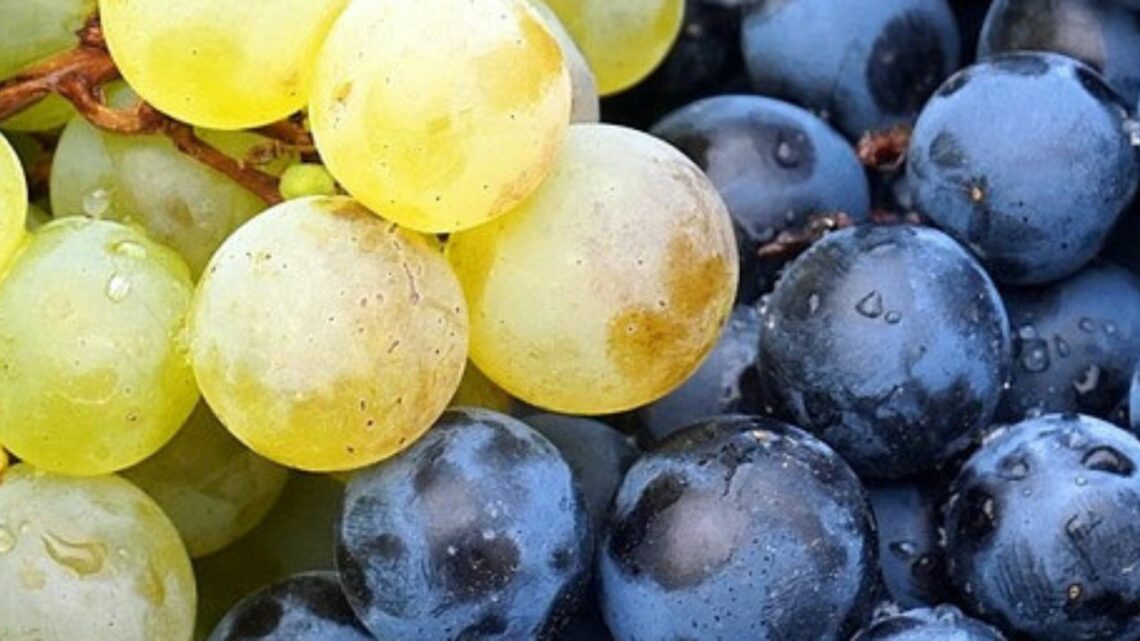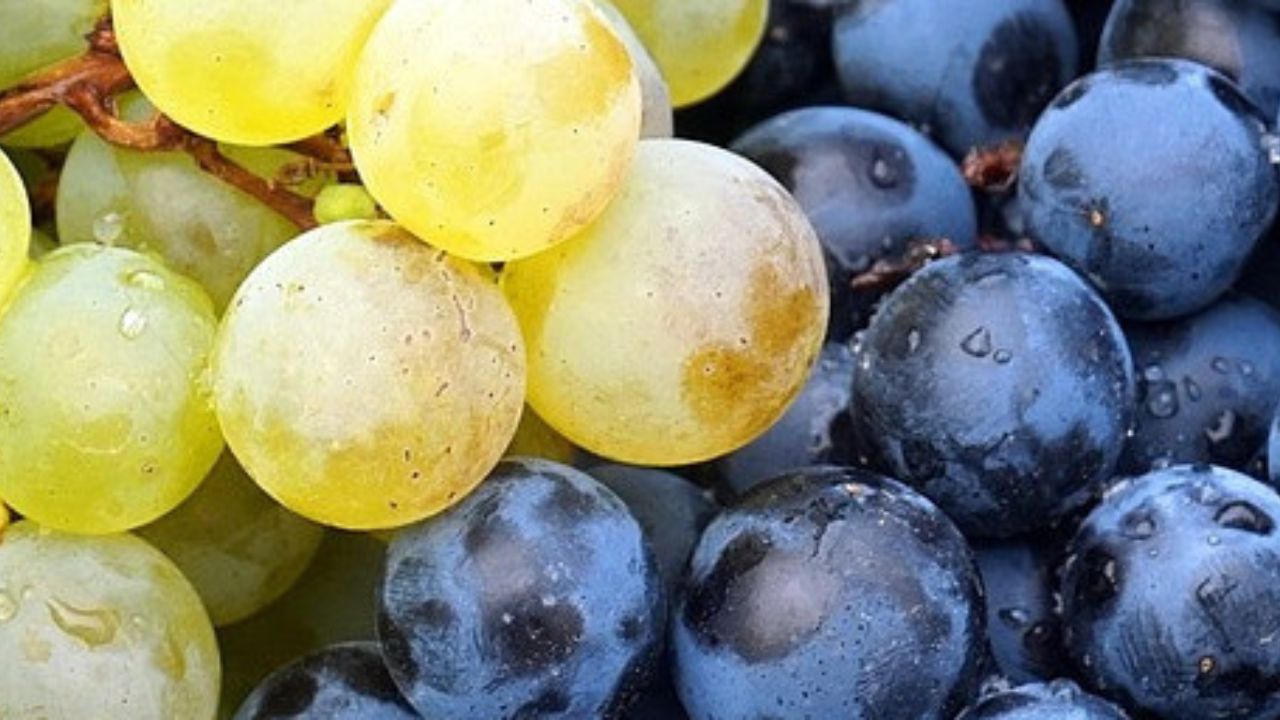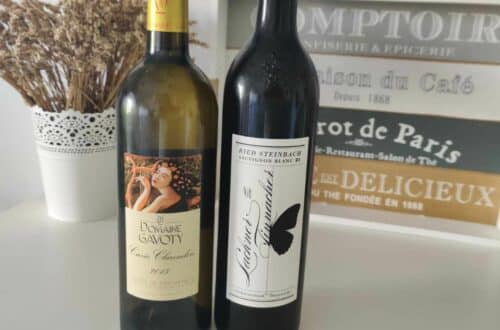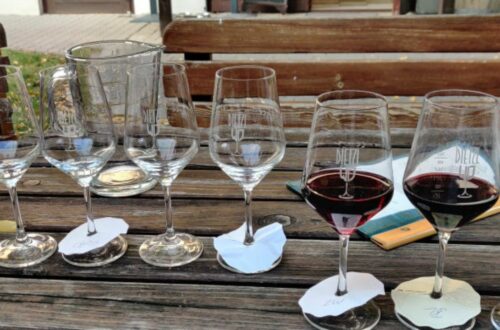
What grape is Sekt made from?
Sekt, a sparkling wine widely enjoyed in Germany and other parts of Europe, is made from a variety of grape types carefully selected for for the production of Qualitätswein. There are 40 of them, 26 are white and 14 are red.
The choice of grape varieties plays a crucial role in defining the flavor, aroma, and overall character of Sekt. Ranging from well-known classics like Riesling and Chardonnay to indigenous varietals such as Pinot Blanc and Pinot Noir, each grape brings its unique attributes to the production process.
The 26 white grape varieties authorized for Qualitätswein
The 26 white grape varieties used for production of Sekt are :
- Blütenmuskateller
- Bouvier takes its name after the banker Clotar Bouvier. It is mostly cultivated in Styria. Berries are usually small, pinkish and thin skinned. These are hence early-ripenin grapes which tend to attract rot easily. It has low acidity so is often blended. it is very popular with Sturm (a still-fermented must)
- Chardonnay was “discovered” in 1986 actually. It was identified as “Weissburgunder” (Pinot Blanc) before. It has other nicknames, such as Klevner in Styria and Burgenland, Feinburgunder in the Wachau and Morillon in Styria.
- Frühroter Veltliner, also known as Malvasier, is a crossing between Roter Veltliner and Sylvaner. It has reddish skin and is sensitive to frost.
- Furmint : represents only 11ha in Austria (though it is still important in Hungary in Tokaj). It ripens late and has thin skin.
- Goldburger, a crossing between Welschriesling and Orangentraube, is an early-ripening grape with low acidity. It os mostly grown in Styria and Weinviertel.
- Gelbermuskateller is the French “Muscat à Petit Grains”. It is mostly grown in Styria. Yields are usually high on warm soils of gravel, sans and schist.
- Grauburgunder (Pinot Gris) is mostly grown in Styria and Burgenland. It has low yields
- Grüner Veltliner : Austria’s leading grape variety
- Jubiläumsrebe
- Muskateller
- Muskat Ottonel is a thick-skinned grape with medium acidity. It is a crossing between Chasselas and Muscat d’Eisenstadt. It is well suited for botrytis.
- Müller-Thurgau a crossing between Riesling and Sylvaner, is mostly in blends. Alone, it gives rather neutral wines
- Muscaris
- Neuburger is also a crossing between Roter Veltliner and Sylvaner. The grapes are made of golden berries and ripens early. It is hard to grow because it is sensitive to frost and rot.
- Riesling prefers cold climates so you won’t find any in Burgenland or Carnuntum. It thrives on primary rocks, preferably in Kremstal, Kamptal and Wachau.
- Rotgipfler is a specialty of Thermenregion and is mostly found in Gumpoldskirchen. It comes from a crossing of roter veltliner and savagnin. Just like its parent, its name is due to the reddish color on the vine’s shoots. This late-ripening grape produces wines that are rich. It is mostly used for BA and TBA.
- Roter Veltliner is a white variety, despite its name (rot means red in German) and has no link to Grüner Veltliner. Its name comes from the fact it has pink berries. Despite its thick skin, it its susceptible to frost. It is best drunk when it is a few years old, then it presents tropical aromas.
- Sauvignon Blanc thrives in Südsteiermark on the fertile limestone soils which gives finess and texture. It is nicknamed Muscat Sylvaner sometimes. It resembles New Zealand Sauvignon Blanc.
- Scheurebe was invented by Dr Georg Scheu : he crossed Riesling and Sylvaner. It has a high sensitivity to frost. Although Riesling is rarely found in Burgenland due to the warm weather, this weather brings structure.
- Souvignier Gris a PIWI grape variety.
- Sylvaner is rarely produced now. It is a crossing between Savagnin and Österreich Weiss.
- Traminer is mostly found in Styria and Burgenland where it produces seet wines.
- Weissburgunder (Pinot Blanc) thrives on chalky soils. It can be found in Styria, where it is mostly vinifie in a refreshing style and is important in Vulkenland (Südosteiermark).
- Welschriesling (Graševina) is mostly found in Styria and Südburgenland. In Burgenland, it is mostly used for TBA. It has thick skins so it attracts easily botrytis. Helmut Land said : “less intense than Scheurebe but gives the most delicious TBA, but I can’t explain why”
- Zierfandler (Spätrot) is a crossing between Roter Veltiner and an unidentified Traminer. It is a specialty of Thermenregion. It is nicknamed “Spätrot” because it ripens two weeks later than Rotgipfler, with which it is often blended. It has thick skins so it needs to well ventilated. It thrives on calcerous soils. A wine made from Zierfandler can stay fresh for over fifteen years.
The 14 red grape varieties authorized for Qualitätswein
The 14 white grape varieties used for production of Sekt are
- Blauburger : The crossing between Blauer Portugieser and Blaufränkisch, conducted by Dr. Zweigelt, has resulted in the development of deep-colored wines. However, these varieties are known to be sensitive to frost and mildew, which can present challenges in their cultivation. Furthermore, the resulting wines are often characterized by a neutral and light profile, with minimal tannin or acidity, making their suitability for certain uses questionable
- Blauburgunder (Pinot Noir) : The cultivation of Pinot Noir in Austria has a long-standing tradition, dating back to the 14th century when Cistercian monks brought the vines to Mönchhof. This grape variety thrives on chalky soils, and in Austrian regions like Gols in Burgenland, which are warmer than Burgundy, careful measures must be taken to protect the vines from excessive sun exposure or deleafing. Despite its adaptability, Pinot Noir remains sensitive to late frosts and can be susceptible to rot. Nevertheless, it is also present in other Austrian regions like Kamptal and Thermenregion, where it showcases its ability to produce elegant wines. However, for Austrian conditions, Saint-Laurent is often considered better suited as it avoids ripening to excessively high sugar levels and is easier to balance in winemaking.
- Blauer Portugieser : Despite its name, this grape has its origin in Austria. This grape variety is known for its early ripening, allowing it to be harvested relatively early in the season. It is also recognized for its high yields, often producing abundant crops.
- Blauer Wildbacher, an ancient variety, is primarily confined to the region of Weststeiermark in Austria. This grape variety is known for its sensitivity to frost and rot, which requires careful attention in cultivation. With moderate yields and late ripening, it is commonly used in the production of dry rosés. The high acidity of Blauer Wildbacher can be seen as a deterrent to some, but it also contributes to the refreshing and vibrant character of the wines it produces. The vinification of Blaufränkisch varies, ranging from the production of simple and fruity wines rounded by aging in large casks to denser wines with greater aging potential. This late-ripening grape thrives in warm soils and possesses thick skins, providing resistance against diseases and rot. In Mittelburgenland, it yields full-bodied and spicy wines, while in Südburgenland, the wines are refined.
- Blaufränkisch, known as Kékfrankos in Hungary and Kemberger in Germany, is regarded as one of Austria’s leading grape varieties. It exhibits enticing aromas of black fruit and offers a high level of flavor intensity. In cooler climates like Carnuntum, it also showcases red fruit aromas. The character of Blaufränkisch is influenced by the soil types it grows in: wines from limestone-rich Leithaberg tend to be more elegant, while those from the rich, deep soils of Mittelburgenland exhibit robust qualities. The style of Blaufränkisch has evolved over the years. In the 1990s, heavily oaked wines with maximum power and concentration were in fashion and received high scores. However, producers and critics now emphasize drinkability and balance as the primary criteria. As a result, the wines are less oaky and demonstrate more finesse.
- Cabernet Franc only covers 74ha and is usually employed in blends
- Cabernet Sauvignon, covering approximately 590 hectares, is surprisingly stable in Austria despite its tendency to ripen irregularly. It is predominantly found in Burgenland, with some remaining in the Thermenregion. In Austria, Cabernet Sauvignon is commonly used in blends, such as the renowned Krug from Gumpoldskirchen.
- Merlot, a grape variety, is cultivated in both Lower Austria and Burgenland, with its plantings more or less evenly divided between the two regions. In Austria, Merlot is predominantly used in blends rather than as a standalone varietal. It is known for ripening more easily than the Cabernet varieties, making it a favorable choice for winemakers seeking optimal ripeness in their wines.
- Ráthay : a PIWI grape variety. If you want to know about those head to my post on Austria’s leading grape variety
- Roesler, a grape variety, is prominently associated with the winery Steyrer in the Traisental region of Austria. This variety is highly regarded for its deep color, adding richness to the wines produced from it. Additionally, Roesler exhibits notable resistance to frost and mildew, making it a resilient and reliable choice for winemakers in challenging climates.
- Rosenmuskateller
- St. Laurent, a grape variety, has a rich history, with some of the oldest vines dating back to the 1950s in Tattendorf. Despite earlier claims of a connection to the village of Saint-Laurent in Médoc, modern ampelographers now associate it with the Burgundy region. Interestingly, the name “St. Laurent” is derived from the birth date of Saint Laurentius, which falls on August 10th, coinciding with the grape’s ripening period. Unlike Pinot Noir, St. Laurent has its own distinct identity. This variety thrives in poor, cool, stony, and well-drained soils that help control its natural vigor. However, its compact bunches make it susceptible to rot, emphasizing the importance of good drainage. St. Laurent retains good acidity, but its high pH levels require winemakers to be vigilant in preventing the presence of brettanomyces, a spoilage yeast that can impact wine quality.
- Syrah covers 152ha in Burgenland
- While Zweigelt showcases favorable ripening characteristics, it is also sensitive to diseases and frosts. Despite these challenges, it produces soft wines with delightful cherry fruit flavors. These wines are best enjoyed in their youth when the fruitiness is at its peak. Zweigelt is a popular choice among wine enthusiasts seeking approachable and vibrant red wines from Austria.
How is Sekt made?
There are three distinct methods used in the production of Sekt.
The traditional method, also known as the méthode champenoise, is a complex process involving a second fermentation in the bottle.
The transfer process, or partial bottle fermentation, shares similarities with the traditional method but includes the collection of wine in pressure tanks.
The Charmat method involves a second fermentation in large pressure tanks. Each method has its unique characteristics and is utilized for different types of sparkling wines.
If you want to delve further into those methods, check out my article on : What is the Sekt method?
Conclusion : What grape is Sekt made from?
Sekt can be made from various grape varieties, both white and red. In Germany, the most commonly used grape varieties for Sekt production include Riesling, Pinot Blanc (Weißburgunder), Pinot Gris (Grauburgunder), and Pinot Noir (Spätburgunder). Other grape varieties such as Chardonnay and Müller-Thurgau may also be used.
The choice of grape variety can affect the style and flavor profile of the resulting Sekt, whether it is a sparkling wine with a crisp, fruity character or a more complex and structured offering.







